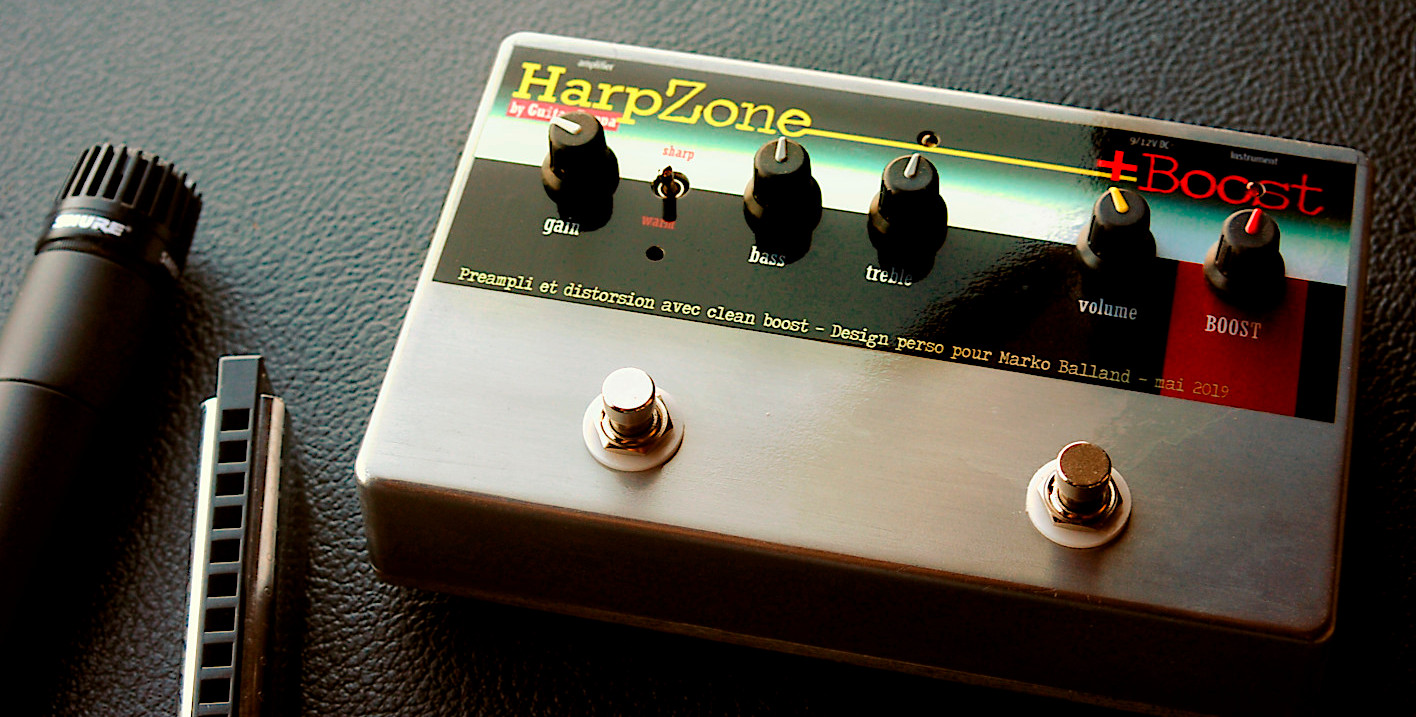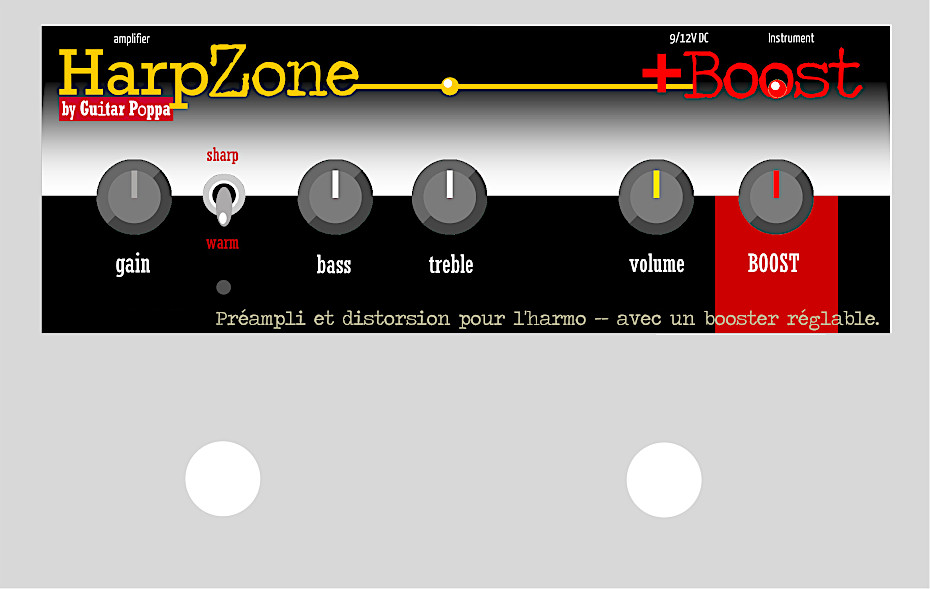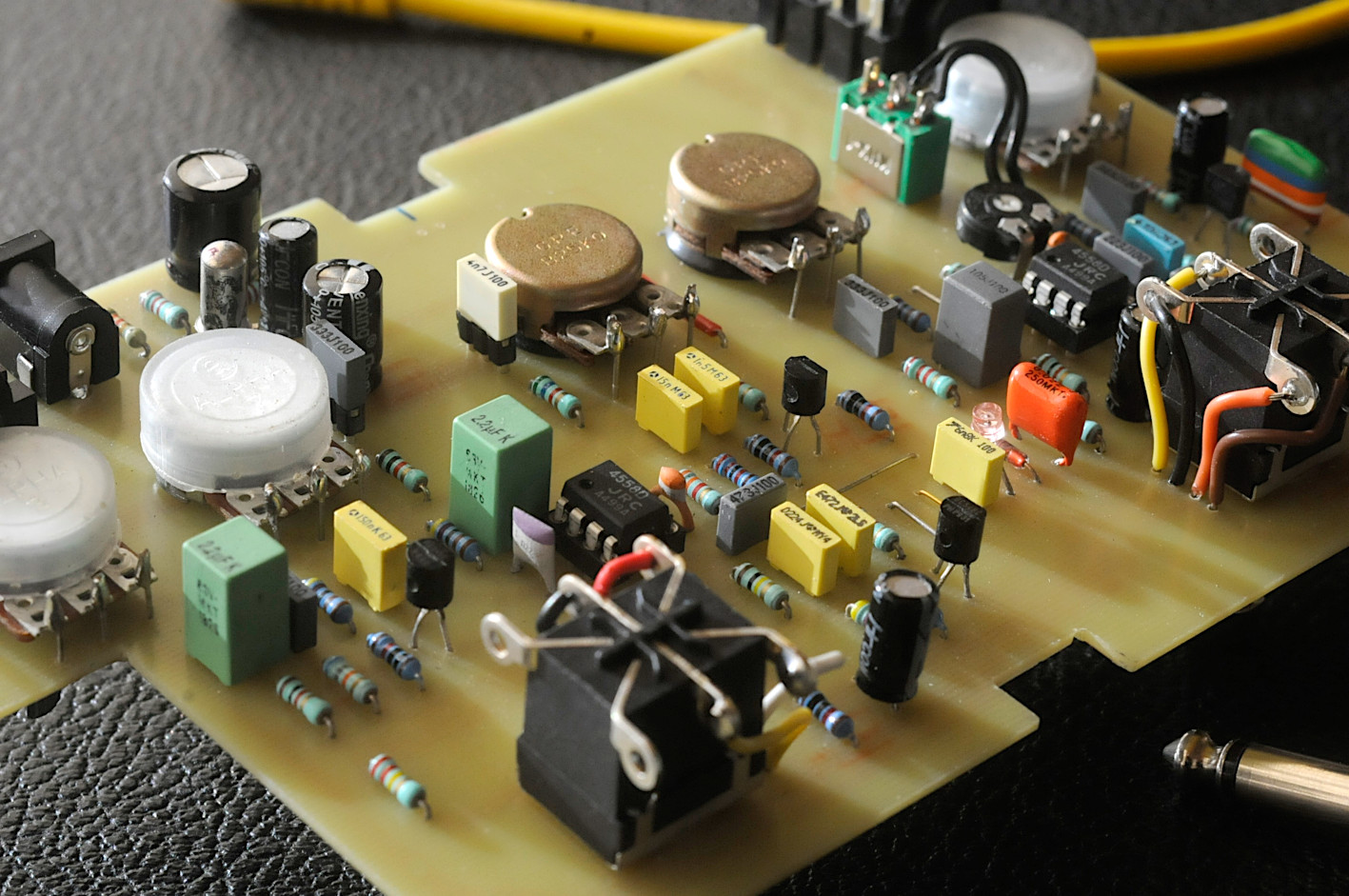HarpZone is a distortion stompbox made for Harp.
It takes up the structure of the classic Metal Zone®,
and preserves the original grit, but adapts it
to the particular sonic profile of the harmonica.
It also features a booster to take fleshy choruses.


Custom prototype for the french harp player Marko Balland, 2019.
General features
• Transposition of the famous Metal Zone MT2® distortion, especially its original input preamp/filter.
• Recalculated circuits for the harmonica.
• 2 voicings: metal distortion (sharp) or soft drive (warm).
• Asymmetric led+silicon diode distortion circuit.
• Two way bass/treble tone circuit.
• Second switch activating an adjustable boost.

The Metal Zone MT2®, a classic of contemporary distortion
This cult distortion from the late 90s/2000s participated in the neo-metal sound of that time through its technical choices: high gain, and an innovative processing of the tone…
• A pre-filtering before the saturation stage accentuates certain frequencies using active circuits called gyrators, replacing the old and noisy inductors…
This filtering causes the saturator stage to produce a particular grit.
• A post-filtering combining a bass/treble Baxandall and a semi-parametric medium.
Bass control is managed by a gyrator tuned to 130Hz. This avoids parasitic sub-bass, and gives a meaty but not leaden sound.
The medium control is very strong, almost too much for some ears…
Modifications by GuitarPoppa
They are numerous but discreet.
They aim to make HarpZone a pedal typically intended for the harp.
• The pre-filtering is maintained, but with more flared curves : it is a question of preserving all the the tonal control to the cheeks and hands of the harmonica player…
• The gain is slightly reduced to avoid the risk of bad feedback.
• The two voicings let you to diversify the sound potential of the distortion mode.
• The saturating diode circuit combines LED and silicon diode. This makes it possible to enrich the timbre and above all to increase the dynamics, and therefore the sensitivity to throat playing.
• A switchable and adjustable booster helps precise chorusing.
• Medium control has been removed at the request of the first orderer.
His demand was to dispense with a violent control, often difficult to manage on stage.

To order…
1. Specify the shipping zone.
2. Click <add to order>.
3. Click <Shopping Cart> on the main menu to finalize.

HarpZone
Unique version
219 €
Distorsion for harp
• Universal input 10 to 500mV.
• Classic controls : gain, bass, treble, volume.
• Voicing switch : Sharp / Warm.
• Booster switch and control pot.
HarpZone
Shipping by the franch post :
France : 12€ — CE+Switzerland : 24€ — Other countries : 32€
 Documentation
Documentation
Downloadable product leaflet (in french)
Ecouter des samples (en construction)

To know more
Input level
Universal high impedance input
1MΩ input impedance, for all types of mike.
Minimum level source: low level dynamic microphone like SM57 (30mV).
Maximum level source: antique or contemporary high impedance microphone (500mV).
Sensitivity adjustment according to the type of mike
Properly adjusted input sensitivity allows for more progressive gain control and makes it easier to set distortion. An internal trimpot is dedicated to this setting.
To adjust sensitivity without opening the case:
• Locate the adjustment hole which is located vertically below the Sharp/Warm switch.
• Insert a 2 mm flat or Phillips screwdriver into the hole, and gently twist it until you feel it click into the internal adjustable potentiometer.
• Turn clockwise to increase sensitivity (low level mic).
• Turn in the opposite direction to reduce sensitivity (high impedance microphone).
Output level
Dry mode: level signal identical to the input signal.
Distortion mode: output level adjustable by the volume control (typical around 12:00).
In both cases, the output is low impedance.
Booster (yellow LED)
• This effect can only be activated when the pedal is in Disto mode (red LED) .
• It is very progressive in the first half of its race, then more and more heavy.
Adjustment by Boost control (+0.5 to +12dB, typical effect: +3dB at 12:00).

Power supply
HarpZone uses a 9V battery or an external 9-12V power supply.
The sound has all its qualities with 9V, with a little more dynamics with 12V.
Internal active filtering eliminates common power supply noise (hiss or rumble).
Typical supply current : 18mA at 9V.
Autonomy: 12 to 24 hours with alkaline battery.


Printed card board with its classic components.



